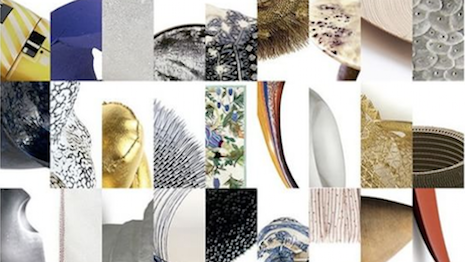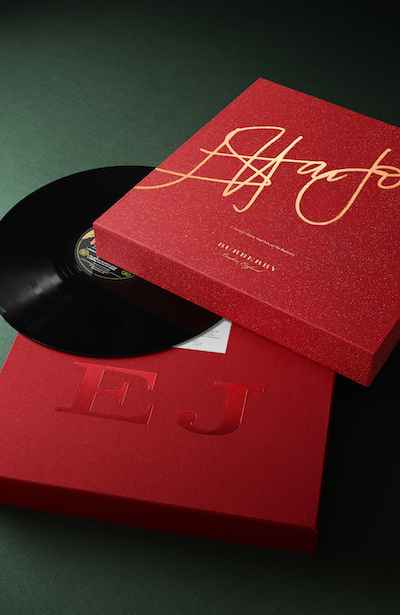 Loewe Craft Prize finalists
Loewe Craft Prize finalists
Wealthy individuals’ patronage of the arts has led luxury houses to support artists, writers, musicians and filmmakers through branded platforms as a method to further connect with the sentiment of their core consumers.
From campaigns directed by Hollywood mainstays to collaborative capsules designed by in-demand artists, luxury brands have worked with the best-of-the-best to demonstrate shared talent and vision. In addition to brand-artist partnerships, luxury has tapped up-and-coming artists through grant programs fielded from open submissions, thus sourcing next-generation talent that wealthy consumers may invest in via purchases or financially support as a patron.
"Luxury houses understand the importance and significance of providing a platform by which to encourage and reward rising talent to ensure there is a pool of artisans from which to draw upon today and in the future," said Rebecca Miller, CEO of Miller & Company. "With collaboration being a prominent medium in the luxury goods space, there is an increase to identify and secure these strategic partners.
"The most alluring partnerships are those who have reached into the arts to help tell their brand’s story or illustrate their DNA – more often in a visual and divergent direction," she said. "On a social level, the impact is profound. A brand will reach a broader audience, beyond their core customer, by inviting them to participate with the brand in a creative and meaningful manner.
"This means communicating via 'dialogue' in unexpected ways using a common 'global' language, the arts. This new messaging through the arts sends a message of education, support, appreciation and respect. It allows young talent to be cast in the 'starring role' becoming the 'celebrity' and the brand acts as the backers and producers."
Art in luxury
Most recently, brands have come out to support literature, photography, music, stage productions and other art forms through a variety of efforts. These categories of interest are reflective of how affluent individuals choose to donate, often selecting philanthropic efforts that lean toward the arts.
"Affluent consumers have traditionally been supporters of the arts," Ms. Miller said. "The common goal of reaching more prospects across all generations is paramount to the survival of the arts and continued growth of luxury brands.
"A powerful strategic partnership when executed well serves all entities equally," she said. "Traditional points of sale are no longer singularly effective in retail, nor are traditional approaches to product design, marketing and distribution.
"Authentic engagement requires a brand to connect through the 'passions' of its target audience and prospects. The arts provide a natural embarrassment of mediums from which 'passions' emerge."
Moët Hennessy Louis Vuitton, for example, is ensuring future access to 18th-century philosopher Voltaire’s complete body of work by joining forces with Oxford University’s Voltaire Foundation to publish previously uncirculated texts.
The project is expected to be complete by 2019. Upon completion, the project will include more than 200 volumes with expert commentary alongside Voltaire’s texts (see story).
Others include Bottega Veneta, which is putting a lens on its art appreciation through an alliance with the Shanghai Center of Photography (see story), and Burberry, which reaffirmed its affinity for music by retailing a limited-edition box set of Elton John records (see story).
Burberry's Elton John box set
Film projects have the support of watchmaker Jaeger-LeCoultre and Gucci, to name a few brand patrons (see story), and opera and stage productions have found advocates in Fornasetti, Karl Lagerfeld, Valentino and Jean Paul Gaultier (see story).
In addition to playing supporting roles in the creativity of others, luxury has worked with numerous creative talents to produce their own limited-edition products.
This common practice that takes luxury know-how and an artist’s vision was most recently explored by Christian Dior.
Dior recruited seven artists to reinterpret and leave their distinct mark on the Lady Dior top-handle handbag.
The limited-edition Lady Dior Art collection launched Nov. 29 in Miami, just in time for Art Basel Miami Beach to begin Dec. 1. In addition to showing the Lady Dior handbag through a creative lens, the seven artists also put their own spin on Dior accessories such as evening clutches, key chains, scarves, bracelets and small leather goods.
Lady Dior Art collection, with artist Chris Martin
Styles of the limited-edition Lady Dior Art collection were capped at 100 handbags, positioning the project as keen for collectors (see story).
Supporting roles
Fine art is at the top of the luxury pyramid, and today’s luxury brands should strive to be modern-day Medicis by becoming patrons, says an Artsy senior executive.
At Luxury Interactive 2016’s “Supporting the Arts: How Artsy is Opening its Storytelling Doors for Brands” keynote, Sebastian Cwilich, Artsy’s president and COO, worked to demonstrate why advertising dollars should be allocated toward the support of the arts. Aside from being a public good, advocating for the arts enhances a brand’s stature and allows it to tap into an audience that is dedicated, involved, knowledgeable and financially established.
Recent developments in the art market have presented an opportune time for brands to become patrons. Mr. Cwilich compared brand marketers to the Medici family of the 16th century, known for their patronage of the arts in Florence and Venice, Italy (see story).
To this point, numerous luxury brands have organized programs in support of the arts that recruit unknown and emerging talents through open submissions.
Luxury-backed programs range from literary contests such as Prada’s annual Literary Journal effort (see story) to Moët & Chandon’s Moët Moments Film Festival featuring 60-second film entries (see story).
Others meld luxury’s dedication to craftsmanship and artisan skills within their artist outreach initiatives.
For instance, Spanish apparel and accessories label Loewe launched an international award to celebrate excellence in craftsmanship.
Organized by the brand’s Loewe Foundation, the annual Loewe Craft Prize is judged by a distinguished panel of experts from the design, architecture, journalism, criticism and museum curatorship sectors.
Loewe Craft Prize is forward-thinking with the brand seeking to recognize the talented artists whose vision and will to innovate will set “a new standard” for the future of craftsmanship. The concept reflects Loewe’s beginnings as a collective of artisans in 1846 (see story).
A brand connection is often the foundation of an arts patronage program.
U.S. jeweler David Yurman, for example, just days ago, announced its Prize for Young Artists. The support of up-and-coming artists is relative to the brand’s heritage, as Mr. Yurman started his career in sculpture before focusing on jewelry design.
Through a collaboration with leading U.S. art schools, the Prize for Young Artists is nationwide art competition centered on the concept of “Pure Form,” a David Yurman collection of metal silhouettes in a nod to the brand’s cable motif.
The grand prize winner will receive a $20,000 scholarship, a masterclass at the student’s school taught by Mr. Yurman and a tour of the jeweler’s studio in New York. The winning student’s sculpture will also be displayed at David Yurman’s boutiques as well as on its Web site and social channels.
"It is every up-and-coming artist’s dream to be discovered, mentored or sponsored by a patron or company that can move his or her career forward," Ms. Miller said.
"The practice of patronage goes back centuries ranging from the early dynasties in China, to the religious houses across Europe during the Renaissance to modern day offerings by inviting young talent to participate in contests that provide heightened education, exposure and reward," she said. "They are encouraged to design in a manner that speaks to and reflects their 'artistic intent'.
"Consumers are tired of the more-of-the-same approach and are rewarding innovation, the 'new standard' across all categories and segments. The beauty of such opportunities is that all participants win - the artist, the consumer and the brand."


